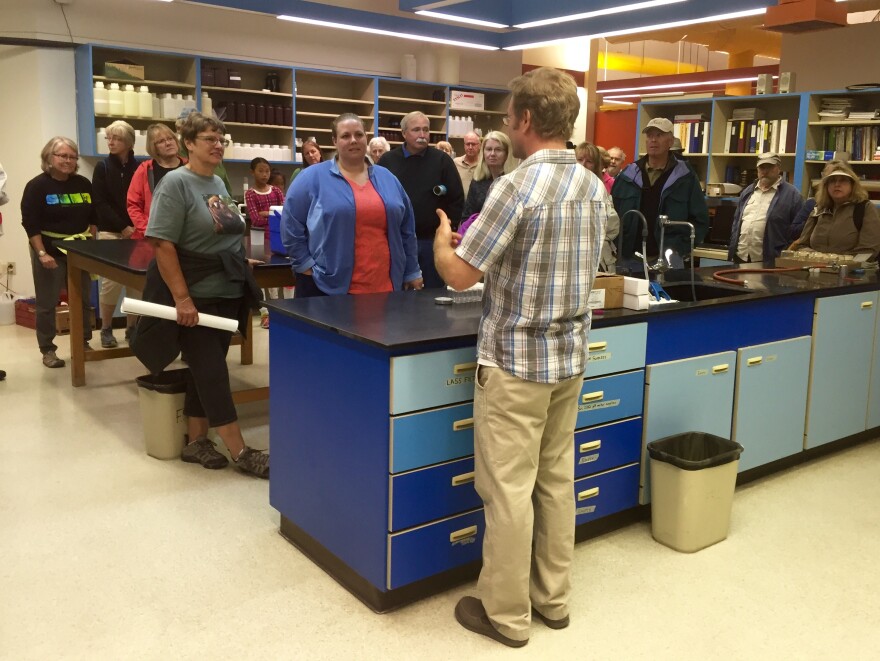The new director of the Flathead Lake Biological Station says the station is poised to become the leading freshwater research station in the country.
Jim Elser can’t physically contain his excitement at being put in charge of the station, which he showed off at its annual open house Wednesday.
There were rehabilitated falcons, mussel sniffing dogs, and grand tours.
But the main attraction has yet to be unveiled.
"My goal is for the biological station to be the premier freshwater biological station in the world," says Elser.
Elser came on board last March after 25 years teaching at Arizona State University and is stoked for the kinds of research and applied science being planned at Flathead Lake. Like:
"Robotic in-situ environmental sensors of DNA molecules that could automatically be watching the water or watching a stream or whatever to detect the DNA of an invasive species and send an alert that a species is present."
Tom Bansak is the assistant director at the biological station. He led several tours over the course of the afternoon through the station’s 80 outbuildings, which include student dormitories, mess halls and research laboratories.
"So on a normal workday you'd see real live scientists doing stuff in here but I've got them all stationed at tables and talking to people today, so it's pretty quiet in here," explains Bansak.
He described the research going on in Flathead Lake as the science of the future.
"Whoever watched Star Trek? And you know, Scotty, and 'boop boop boop', friendly humanoid life forms? We're that far away from Star Trek being real. I mean, it’s incredible," Bansak says to the tour group.
He pointed to DNA sensors in the lab that can be carried in a backpack and controlled with a smart phone.
"You can now almost in real-time identify what species you're encountering."
Elser explains it like this:
"So for example, if an invasive mussel is in a water body you can often detect it just in the DNA that's in suspension in the water without ever actually finding the organism itself."
That early detection could help protect Flathead Lake from the arrival of invasive species like quagga and zebra mussels, which can cause hundreds of thousands of dollars of damage to shoreline property and recreational vehicles.
Elser said that people’s love of the incredible clarity of Flathead Lake’s waters translates into economic value. He pointed to studies from 2014 that estimated the lake brought in $1.6 billion in nature-based tourism in Flathead and Lake Counties, and over $20 billion worth of ecological services, like supplying clean water and flood protection.
Developing this type of early detection technology would not only help keep Flathead Lake healthy, but it would also put the University of Montana on the map as a leading designer of intellectual property which can make money.
That’s where Cody Youngbull comes in.
"I build sensors for hire," says Youngbull.

Youngbull is a recently-hired research professor at the biological station. He will help oversee one of the more ambitious aspects of Elser’s goal to become the world’s preeminent freshwater research center: Sensor Space.
"We will be the cutting-edge sensor prototyping center."
Sensor Space is funded in part by a grant from the National Science Foundation. When completed by the end of next year, it will be a facility for designing, building and testing sophisticated environmental sensors, in keeping with the new station director’s goal, says Youngbull.
"He wants to turn this into the smartest lake in the country."
In addition to the increased attention to technological innovation, new Station Director Jim Elser says he’s focused on bringing in new talent and increasing learning opportunities for undergraduate and K-12 students, as well as members of the community.
"There's the revolution going on in this field called environmental DNA."
And Elser says Montana is poised to be at its forefront.






